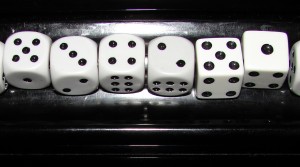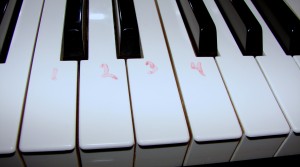I have been experimenting with ways to give my students a more thorough understanding of functional harmony. The deeper the student’s understanding of harmony , the easier it is to learn and memorize music. Even something as simple as knowing that a V chord usually moves to I can help a student remember what harmony follows, identify new tonal areas, and understand phrase structure.
My newest experiment involves using dice to have students construct viable harmonic motion and then play it on the piano. So far, I’ve just started playing with the concept with my students who have a more advanced understanding of harmony, but I’m excited enough about the possibilities with all my students to write about this now.



